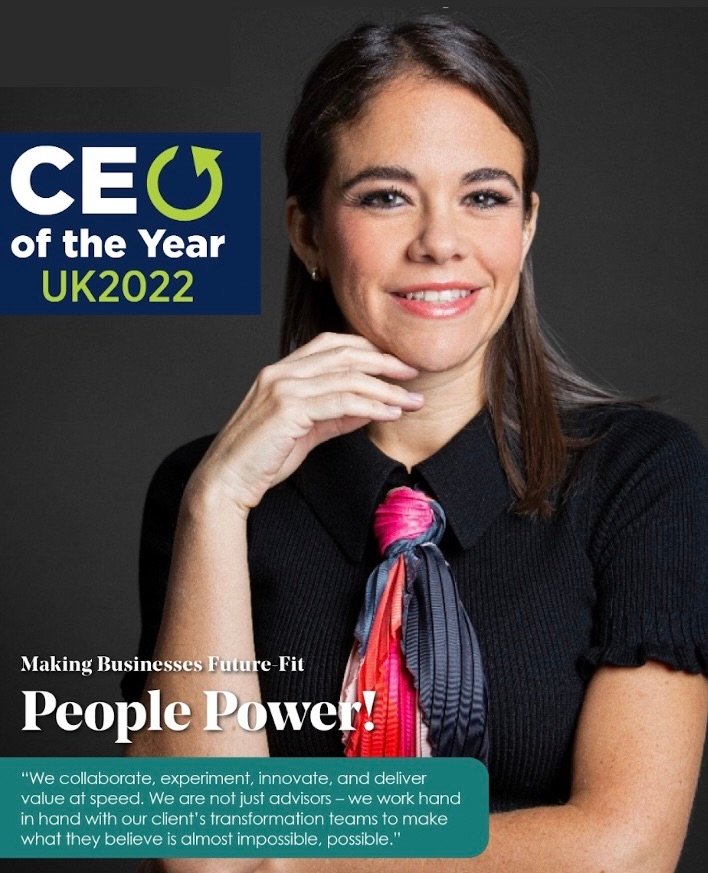“It means Earth-shaking change,” he said, nodding sagely inside a dimly lit pyramid in Mexico. My eyes moved closer to the image of the Aztec Ollin symbol. A simple, yet complicated design centered around the third eye. Nearly ten years on and those three words keep coming back to me.
We are living in a time of unprecedented, Earth-shaking change. Socially, environmentally, technologically, our world is hurtling forward. Volatile and unpredictable, it fills many with a fear of what might happen next. But for a select few, a sense of burning excitement. The excitement of what could happen next.
In today’s business world we are all searching for that elusive method to react quickly and adapt to changes in our environment. Transformation has become a panacea for businesses, and business leaders – a go-to buzzword, broadly used to describe any large-scale change. But what does transformation really mean, and does every business need it? To answer that, it is important to understand two core concepts often confused with transformation: evolution and reconfiguration.
Evolution is a constant and gradual change, whether we agree with it or not. As humans, we are biologically destined to change. It is physically impossible to fight the natural transformation that the body undergoes. A teething toddler wailing in its mother’s arms, the awkward slumping of a bedraggled teenager or the tired realization that those knees are not what they once were. Businesses, like humans, have a natural process of evolution. Employees come and go, workspace is refurbished, processes and tools are updated. Likewise, they experience natural pain points when symptoms appear which show a system not working as well as it could, or as it once did. Clear signs that a new phase is needed – whether business leaders are ready for it or not.
It is important to separate the natural state of changing and the conscious act of changing. As humans, opportunities for positive change are presented to us throughout our lives, whether we grasp them or not is our choice. Businesses too experience conscious change, often referred to as a ‘process of continuous improvement’. Most companies today are making operational changes to become better, faster and cheaper. Yet while implementing new technologies, automatizing, simplifying and claims of “becoming digital”, the reality is that these examples of incremental improvement, fall far short of true transformation.
Re-configuration takes this beyond mere cautious progress. It involves a fundamental change, not intended to fix the old or simply react to the present needs, but rather to prepare for the future. It is about shaking old habits, stale routines, and embedded mindsets to reach a future goal, to the extent that the face that looks back in the mirror is almost unrecognizable. A person training for their first marathon undergoes a radical reconfiguration. Their diet, activities, sleeping patterns – even mood and personality, might be indistinguishable from what came before. However, the intrinsic nature of the person remains the same. In business, Netflix provides a perfect example of reconfiguration. A company which began life sending DVDs through the post and today stands as the world’s leading provider of online streamed content. It is an example where the boundaries of transformation and reconfiguration can appear to blur. But it is worth remembering that Netflix’s ethos as a home entertainment provider has remained remarkably the same despite its drastic changes.
Which leaves us with transformation, that tempting enigma of a word. Transformation is an abrupt and marked change in essence, appearance, and identity. It is about becoming something or someone completely different. For humans, we used to think such a change was impossible, but with the developments of biotechnology who knows what one day might be possible. For businesses, however, not only is it feasible but increasingly common. The tough, ever-changing market conditions are pushing more and more companies into extreme situations where transformation becomes an imperative. IBM and Xerox may have been early examples, but in recent years the likes of Apple, Google and Amazon have joined the select few. These transformations have occurred either when the survival of the business was at stake, whether because of obsoletion, funding or market pressure; or to generate new value through a massive foreseen opportunity, and being capable of grasping it before a competitor. But the commonality is always centered around the capacity to anticipate change, either to survive or to thrive.
The business world is changing at a blistering pace, and it can be a bewildering time for business leaders. Should we be evolving, reconfiguring or transforming? Yet attempting to narrow it down to a single choice misses the point entirely. Like humans, businesses are constantly evolving, both consciously and naturally, but in today’s world this is the absolute minimum requirement. These changes might preserve a company’s survival in the short term but will not provide long-term sustainability. For those who dare to dream bigger; the marathon runners – the life changers – fundamental reconfiguration is a necessity, and business is no different. Relying only on making continuous improvements and operational changes is simply inadequate for those who want to thrive and not just survive.
Business leaders shouldn’t choose between evolution and re-configuration, just as humans shouldn’t choose between organic growth and acts of fundamental and large-scale change. Only by successfully combining the two can we ever really hope to create a true impression on the world – as humans, and as business leaders. Radical transformation may not be something needed by all or even possible for all, but reconfiguring to become future-fit is.

When the Earth shakes, the future belongs only to those who have anticipated the change and prepared for it.



